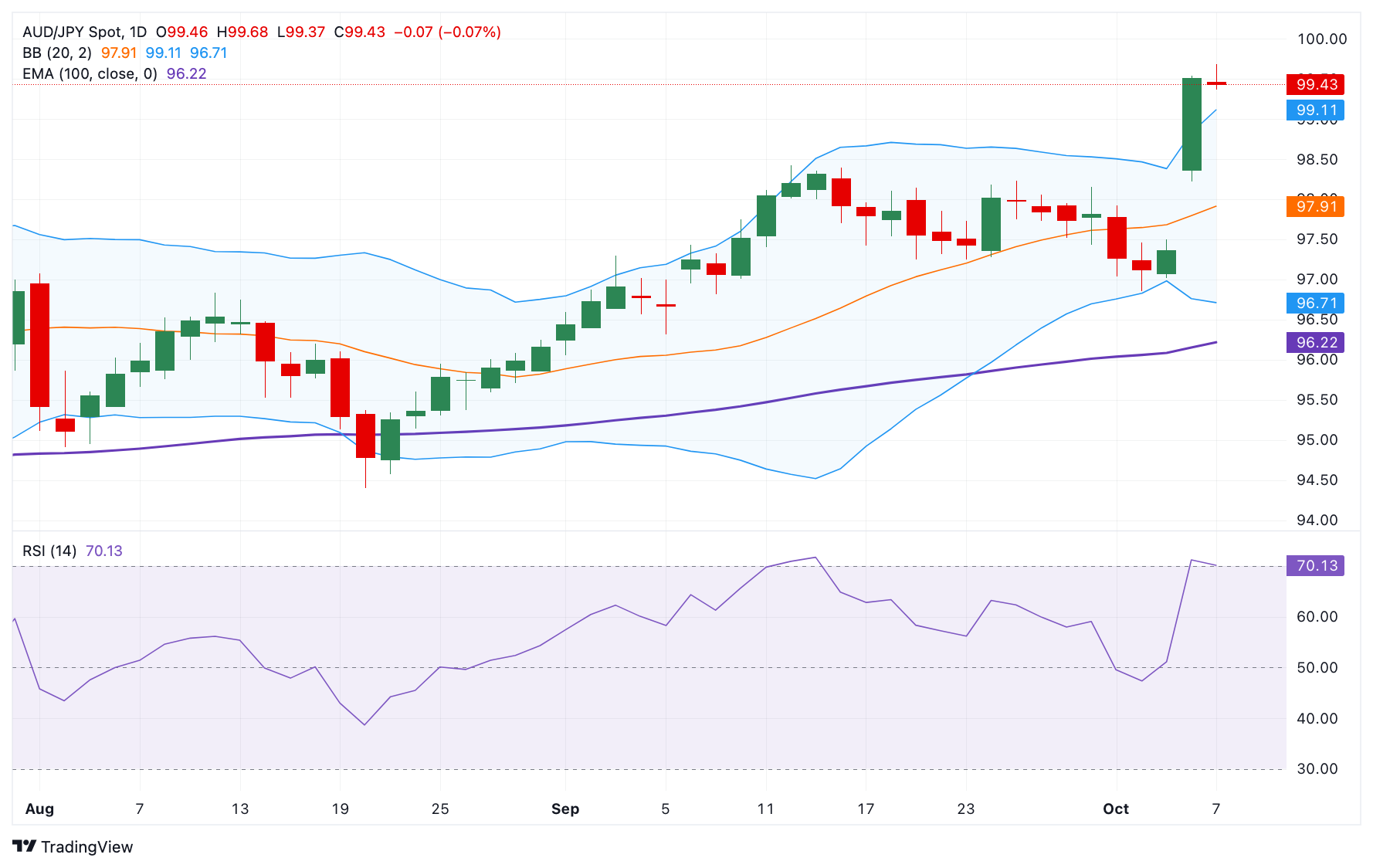AUD/JPY Price Forecast: Key upside barrier emerges near 100.00, eyes on overbought RSI
- AUD/JPY softens around 99.45 in Tuesday’s early European session.
- The cross keeps the bullish view, but the overbought RSI condition might cap its upside.
- The key resistance level is seen at 100.00; the initial support level is located at 98.22.
The AUD/JPY cross trades on a negative note near 99.45 during the early European session on Tuesday. The Japanese Yen (JPY) recovers slightly against the Australian Dollar (AUD) after reaching its lowest since November 2024. The potential downside for the cross might be limited as Sanae Takaichi’s victory caused traders to reduce bets that the Bank of Japan (BoJ) will hike interest rates this month.
According to the daily chart, the positive view of AUD/JPY remains in place as the cross is well-supported above the key 100-day Exponential Moving Average (EMA). However, the 14-day Relative Strength Index (RSI) stands above the midline near 70.35, indicating the overbought RSI condition. This suggests that further consolidation or a temporary sell-off cannot be ruled out before positioning for any near-term AUD/JPY appreciation.
On the bright side, the key upside barrier for the cross emerges at the 100.00 psychological level. Further north, the next hurdle is seen at 101.56, the high of November 20, 2024. A decisive break above this level could pick up more momentum and aim for 102.30, the high of November 8, 2024
On the other hand, the initial support level for AUD/JPY is located at 98.22, the low of October 6. Any follow-through selling below this level could expose 97.28, the low of September 24. The additional downside filter to watch is 96.70, the lower limit of the Bollinger Band.
AUD/JPY daily chart

Japanese Yen FAQs
The Japanese Yen (JPY) is one of the world’s most traded currencies. Its value is broadly determined by the performance of the Japanese economy, but more specifically by the Bank of Japan’s policy, the differential between Japanese and US bond yields, or risk sentiment among traders, among other factors.
One of the Bank of Japan’s mandates is currency control, so its moves are key for the Yen. The BoJ has directly intervened in currency markets sometimes, generally to lower the value of the Yen, although it refrains from doing it often due to political concerns of its main trading partners. The BoJ ultra-loose monetary policy between 2013 and 2024 caused the Yen to depreciate against its main currency peers due to an increasing policy divergence between the Bank of Japan and other main central banks. More recently, the gradually unwinding of this ultra-loose policy has given some support to the Yen.
Over the last decade, the BoJ’s stance of sticking to ultra-loose monetary policy has led to a widening policy divergence with other central banks, particularly with the US Federal Reserve. This supported a widening of the differential between the 10-year US and Japanese bonds, which favored the US Dollar against the Japanese Yen. The BoJ decision in 2024 to gradually abandon the ultra-loose policy, coupled with interest-rate cuts in other major central banks, is narrowing this differential.
The Japanese Yen is often seen as a safe-haven investment. This means that in times of market stress, investors are more likely to put their money in the Japanese currency due to its supposed reliability and stability. Turbulent times are likely to strengthen the Yen’s value against other currencies seen as more risky to invest in.

